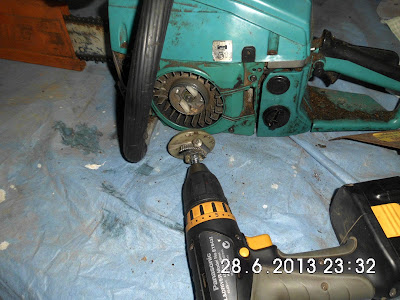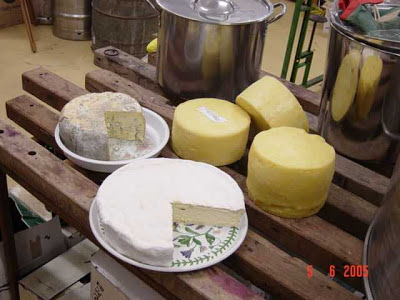Vinegar is a useful product. An ideal
additive to Olive Oil in a salad, a preservative and flavour enhancer
for bottled vegetables or an additive to your favourite cleaning
product if not the cleaning product.
We use red wine vinegar or sherry
vinegar for salad dressings, White wine vinegar for cleaning
solutions. We used to make Apple Cider vinegar but now keep the apple
cider for drinking instead.
Vinegar is simple to make all it takes
is time. Our preferred receptacle for manufacture is the two litre
flagon. Any red or white wine which has gone off in our household is
put to one side for vinegar (some might question if there is ever a
time when wine is undrinkable). To start off for the first time it is
easier to use a small amount of bought vinegar just to speed up the
process – better if it had not been pasteurised. Put about a litre
and a half of wine in the flagon and add some vinegar. Leave the
level well down the neck so it has the maximum surface area. Stopper
the top with cotton wool and leave alone. Aerating the liquid by
transferring it from one container to another about once a week or
month will assist. After a few months taste to see if it is vinegar.
It is possible to smell the difference between the finished product
and one that still has time to go.
Eventually you may see a big blob of
slime like material form on the surface (doesn't always) – this is
a good indicator that you are on the right path. Keep this blobby
slime in the flagon. The slime is called "The Mother" and is just a by-product of the process and is best kept to aid in the conversion process. It is not a bad thing. When the vinegar passes the taste or smell test
decant about two thirds for use and add back more wine for ongoing
conversion. Stating the obvious but keep white wine for white vinegar
and red wine for red vinegar and sherry for sherry vinegar.
Two faults may occur. The first
involves grubs breeding in the vinegar which is caused by not
stopping the top well with cotton wool. They will create a vinegar
with an awful smell which is best disposed of. The other main fault
is an ethyl acetate (i.e. nail varnish) nose which is part of the
conversion of alcohol to ascetic acid. It is only a few molecules per
million but is very pronounced. By decanting the flagon regularly and
incorporating lots of air the molecules will dissipate and smell
disappear in time.
We keep about a 5 or 6 flagons going at any one time stored at the back of the laundry out of the way and bottle a few 750 ml bottles at a time. The vinegar continues to develop in the bottles and if cloudy at first will eventually fall clear naturally.
Citrus Cleaner Recipe.
Take half a dozen pieces of citrus, cut
up finely and cover with water , boil until the fruit is soft. Strain
and then discard the pulp. Add white wine vinegar to the citrus
liquor in equal parts. Add enough drops of scented oil ( e.g.
Eucalyptus, Tea Tree etc.) so that a thin film forms on the surface
of your storage container. Ready to use.
Salads.
An interesting way of incorporating
vinegar into a salad rather than adding it to the oil.
Cut up the onion component first add a
couple of tea spoons (or more if you like it strong) of vinegar and
massage the vinegar into the onion then build the rest of the salad.
The oil can be sprinkled on at the end before serving.
Adds a different dimension of flavour.
 |
| l to r Sherry Vinegar, Red Wine Vinegar, Flagon in progress. |









































.JPG)
.JPG)
.JPG)
.JPG)



.JPG)
.JPG)